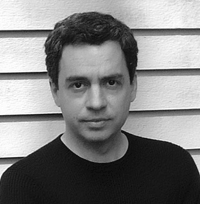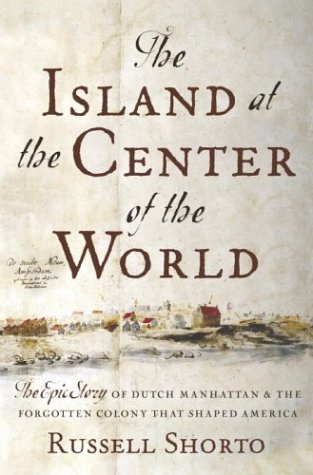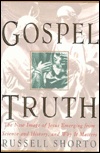 RUSSELL SHORTO An Interview March 24, 2004 (Wednesday) 5:00 p.m. Reading/Exhibit Clark Auditorium Cultural Education Center Albany, New York Registration advised Call 486-4815 |  |

 RUSSELL SHORTO An Interview March 24, 2004 (Wednesday) 5:00 p.m. Reading/Exhibit Clark Auditorium Cultural Education Center Albany, New York Registration advised Call 486-4815 |  |
Russell Shorto is the author of The Island at the Center of the World: The Epic Story of Dutch Manhattan, the Forgotten Colony That Shaped America (March 2004), a radically new history of New Netherland. Written for the common reader, the book is based on the vast, newly-translated 12,000-page 17th century Dutch archive of the New Netherland Project. It is the first popular history book to make use of these sources.
"Russell Shorto�s dramatic adventure tale about the settling of Manhattan will transform the way we look at American history," asserts bestselling historian Walter Isaacson, author of Benjamin Franklin: An American Life. Indeed, Shorto�s book shows persuasively that modern American culture is more firmly rooted in Dutch New Amsterdam than it is in the Plymouth Colony of New England. The democratic traditions, ethnic pluralism, commercial ingenuity, intellectual flexibility, and moral open-mindness that have come to be thought of as American values come not from the rigid, intolerant Pilgrims, but from the unique society that flourished in old Manhattan.
The Island at the Center of the World brings New Amsterdam vividly to life, with its mixed community of Dutch aristocrats, merchants, farmers and seamen, as well as its sizable populations of Jews, Italians, Germans, Africans and Scandinavians, all of whom helped establish Manhattan as the first melting pot of North America.
"Shorto�s prose is deliciously rich and witty, and the story he tells�drawing heavily on sources that have only recently come to light�brings one surprise after another. His rediscovery of Adriaen van der Donck, Peter Stuyvesant's nemesis, is fascinating." - Historian Edwin G. Burrows, winner of the Pulitzer Prize in History

Shorto is perhaps best-known for books that explain rational and scientific investigations of religion, including Saints and Madmen: Breaking Down the Boundaries Between Psychiatry and Spirituality (1999) and Gospel Truth: The New Image of Jesus Emerging from Science and History and Why It Matters (1997).
A prolific writer, Shorto has produced several short popular biographies of various American cultural figures, including Jane Fonda, Jackie Robinson, Thomas Jefferson, Abraham Lincoln, David Farragut, Tecumseh, Geronimo and Edgar Allen Poe. He has also written several children�s books in the Where Does This Come From? series, including Ice Cream, Baseball Bat, Crayon, and Penny.

|
Times Union Article Doubleday |
|